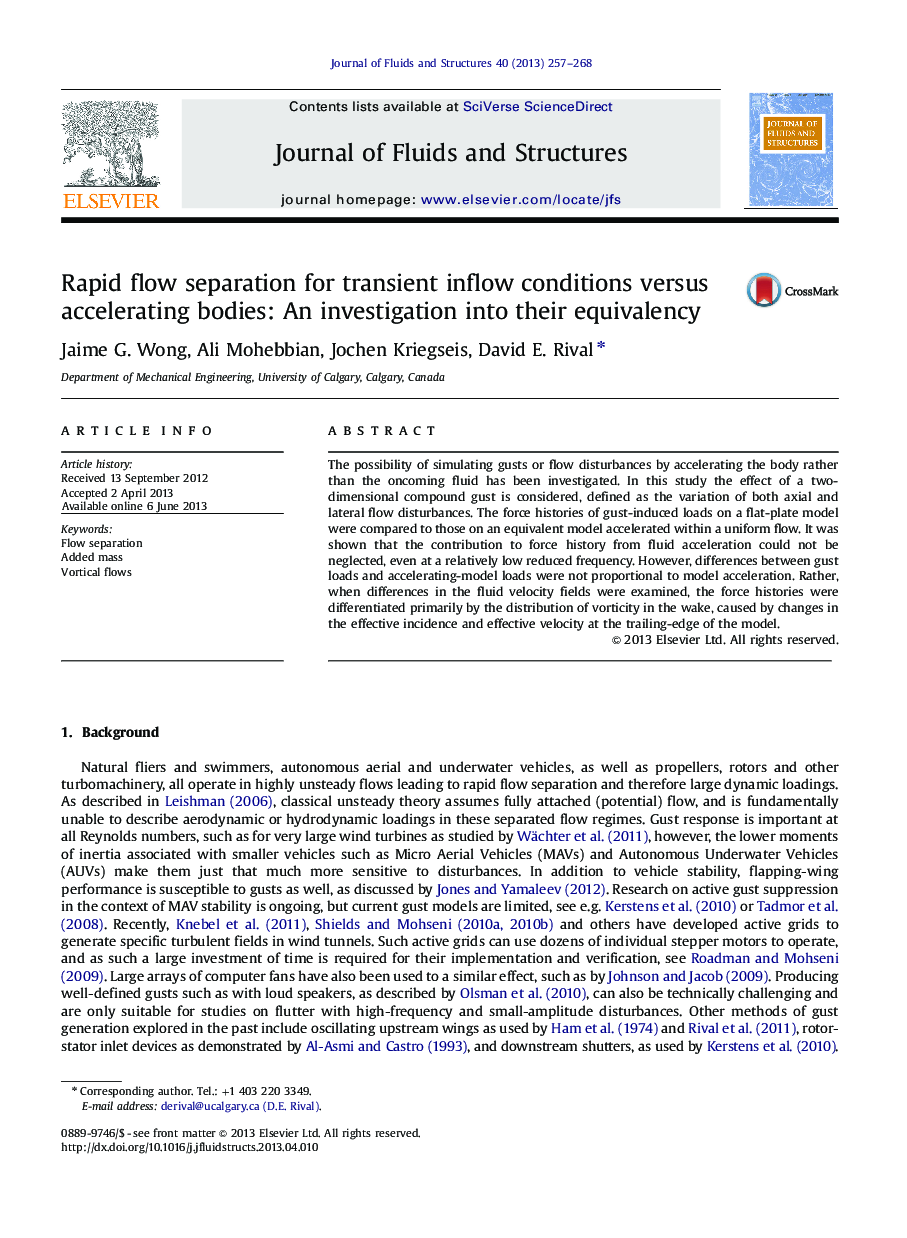| Article ID | Journal | Published Year | Pages | File Type |
|---|---|---|---|---|
| 797018 | Journal of Fluids and Structures | 2013 | 12 Pages |
The possibility of simulating gusts or flow disturbances by accelerating the body rather than the oncoming fluid has been investigated. In this study the effect of a two-dimensional compound gust is considered, defined as the variation of both axial and lateral flow disturbances. The force histories of gust-induced loads on a flat-plate model were compared to those on an equivalent model accelerated within a uniform flow. It was shown that the contribution to force history from fluid acceleration could not be neglected, even at a relatively low reduced frequency. However, differences between gust loads and accelerating-model loads were not proportional to model acceleration. Rather, when differences in the fluid velocity fields were examined, the force histories were differentiated primarily by the distribution of vorticity in the wake, caused by changes in the effective incidence and effective velocity at the trailing-edge of the model.
